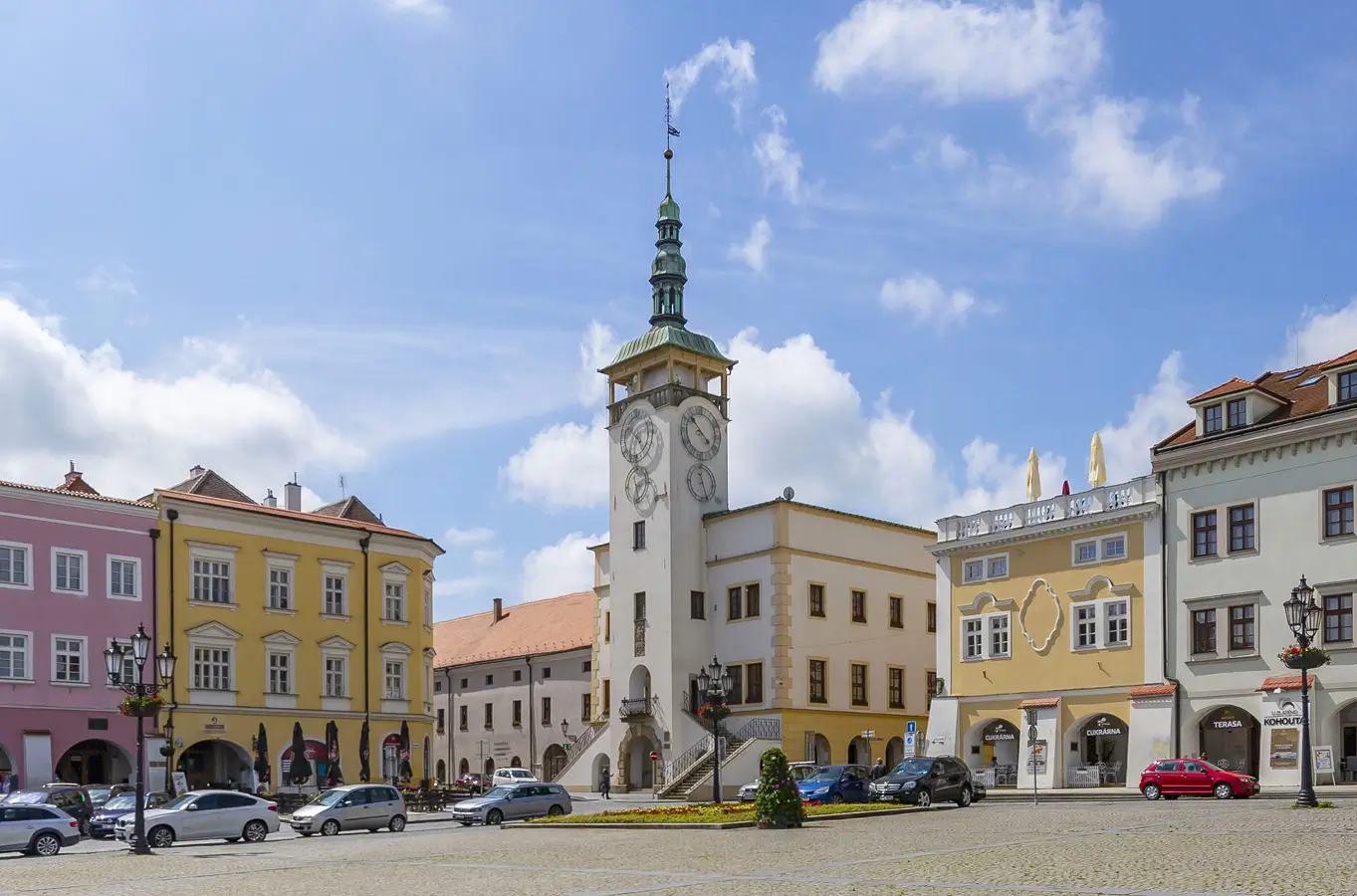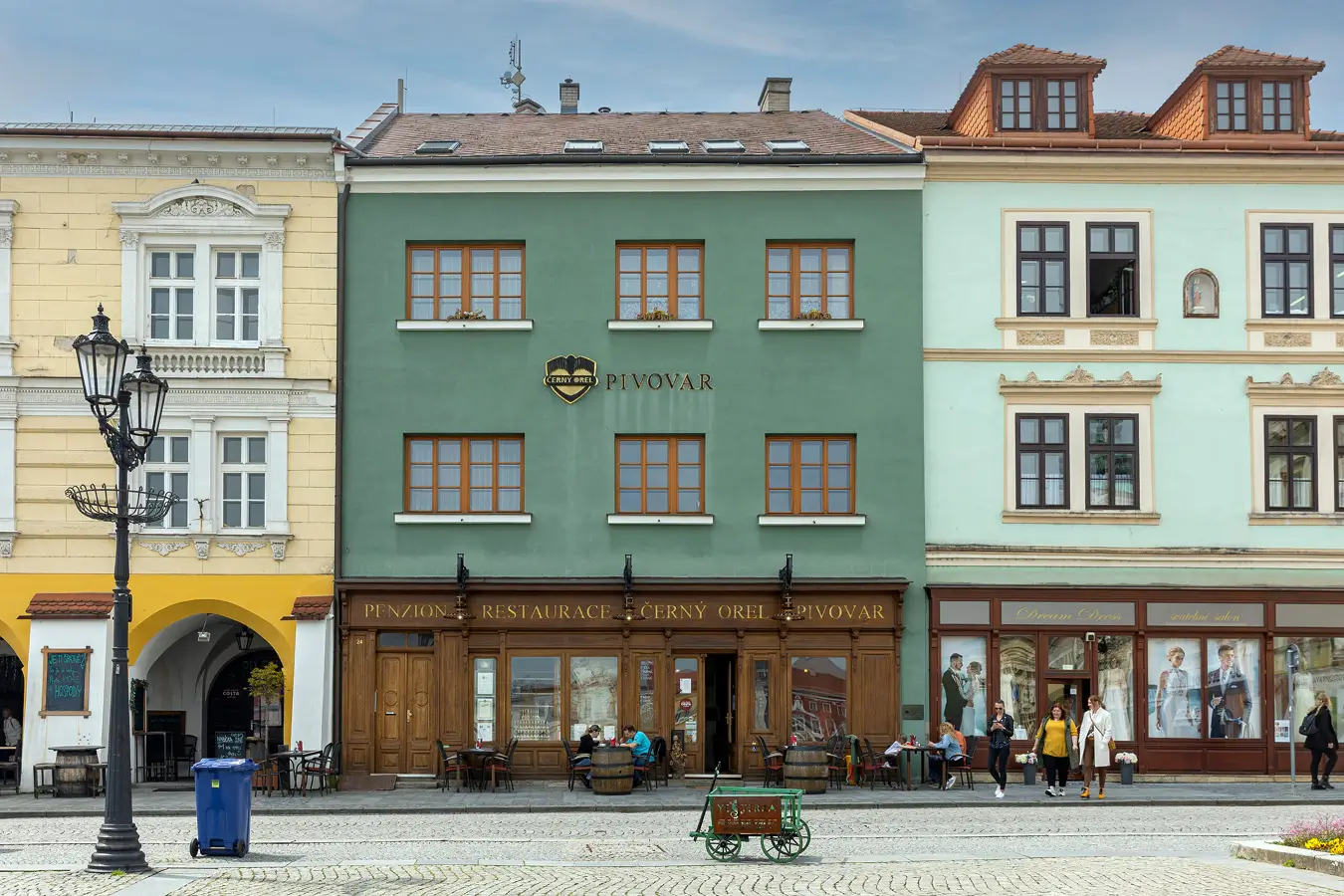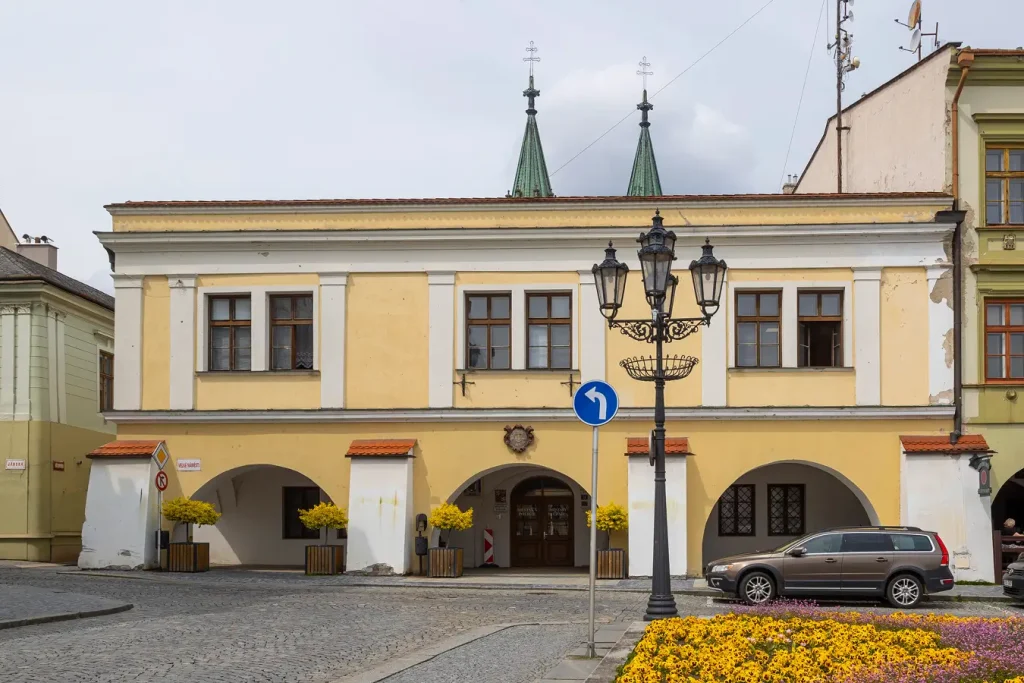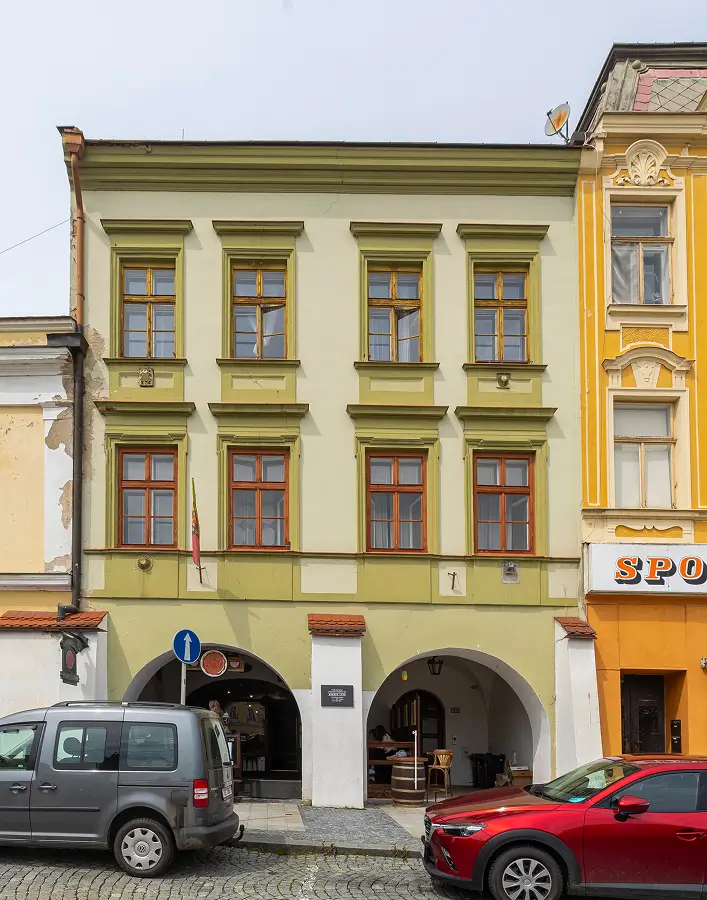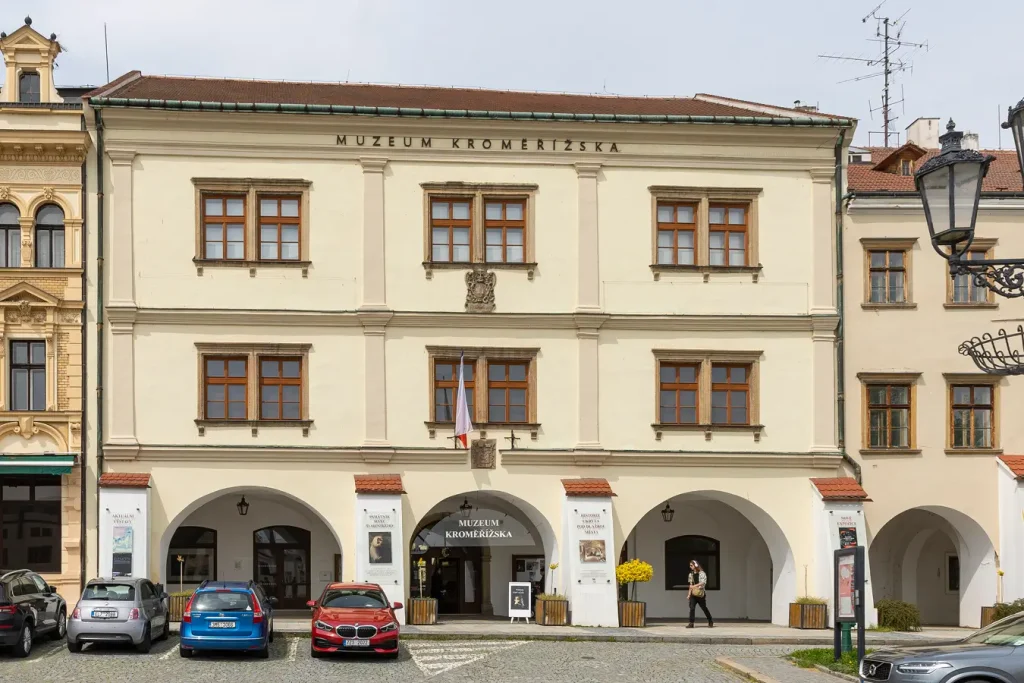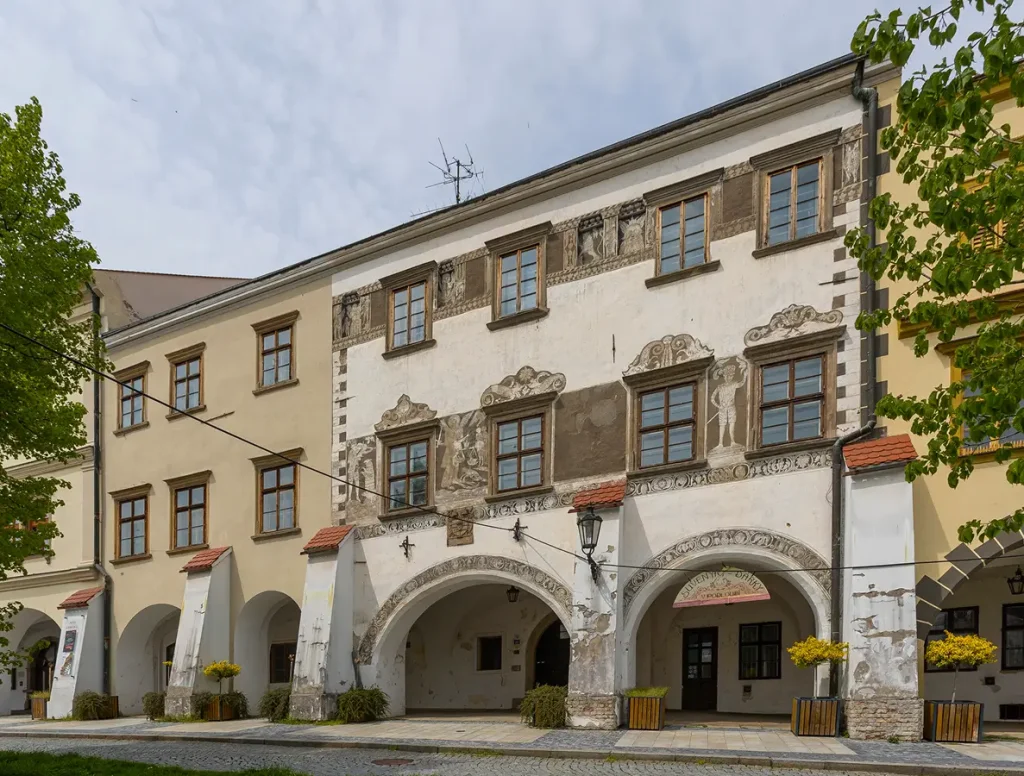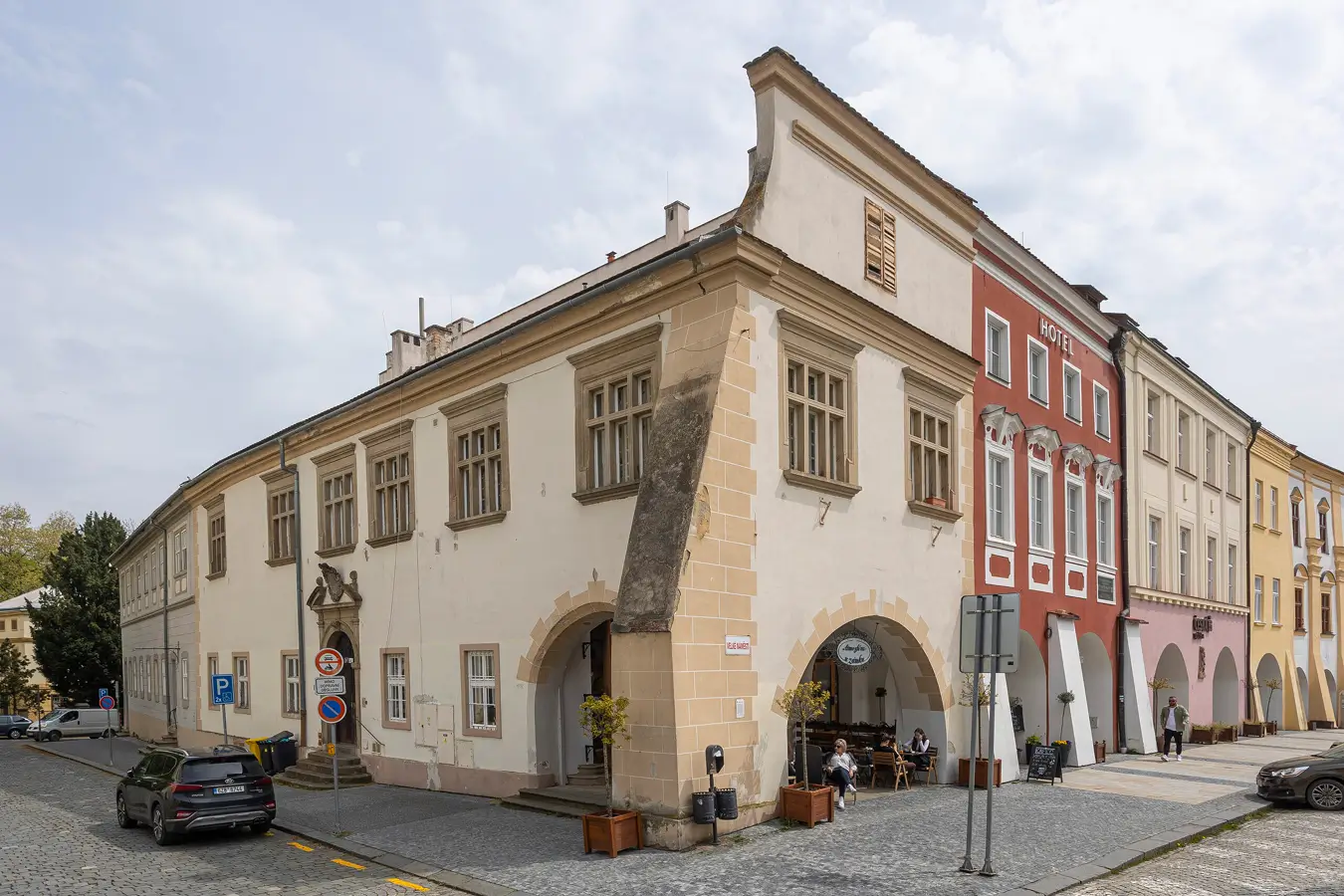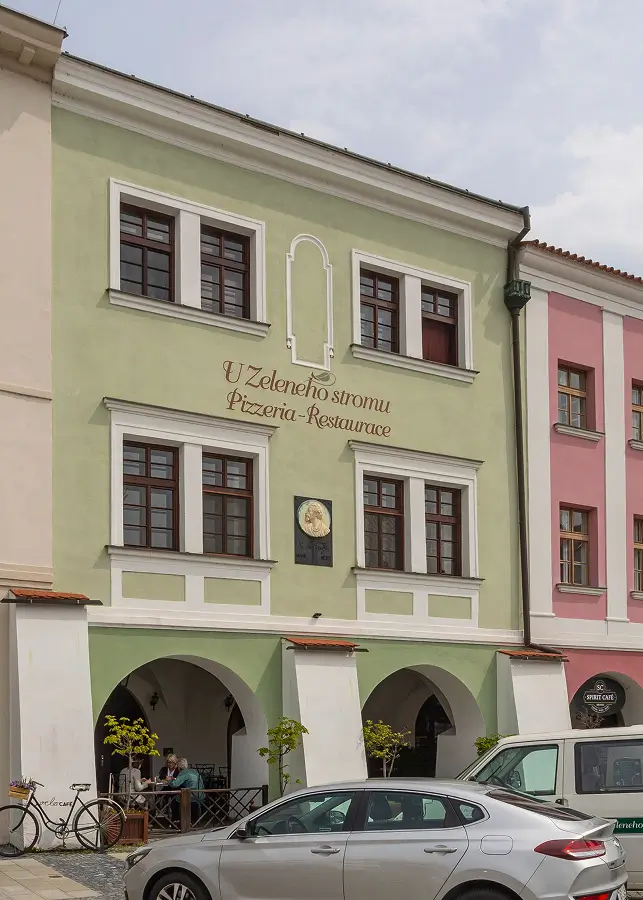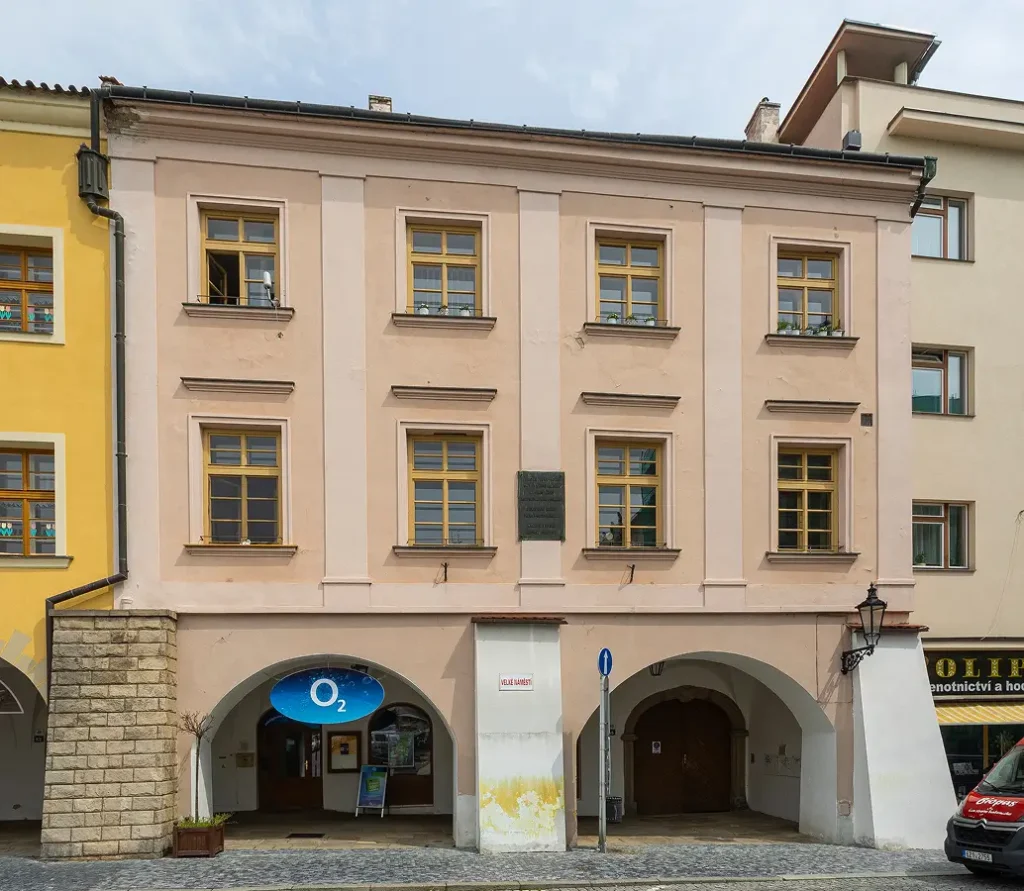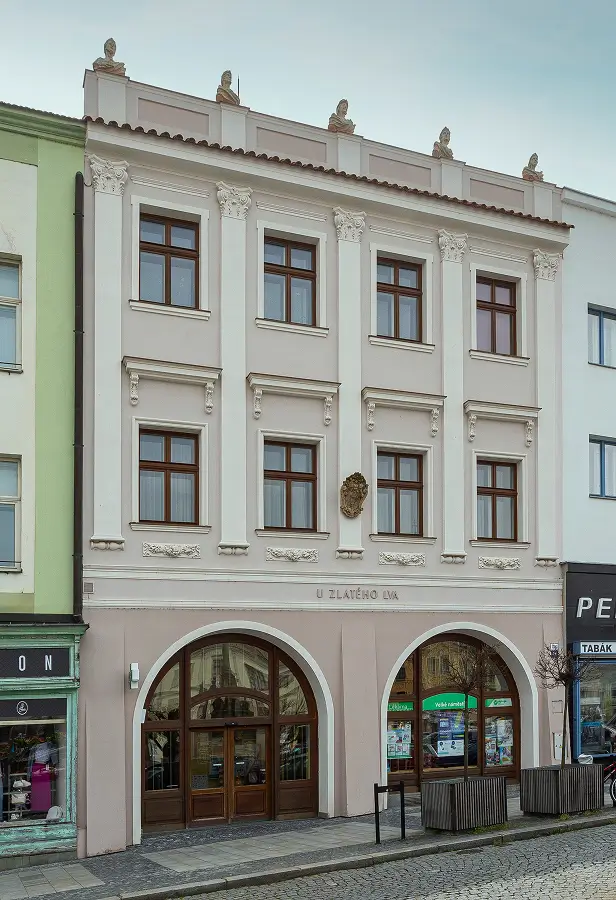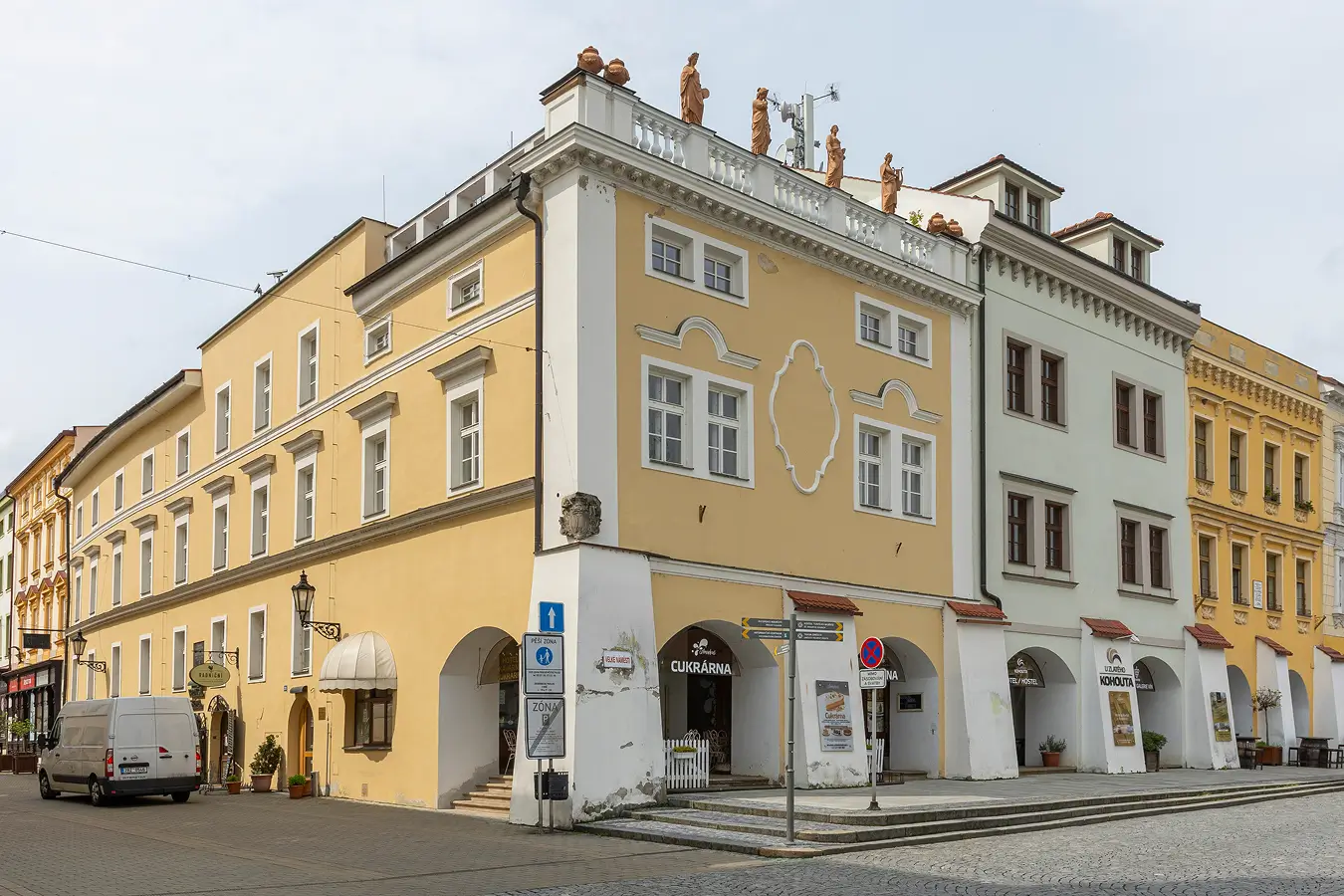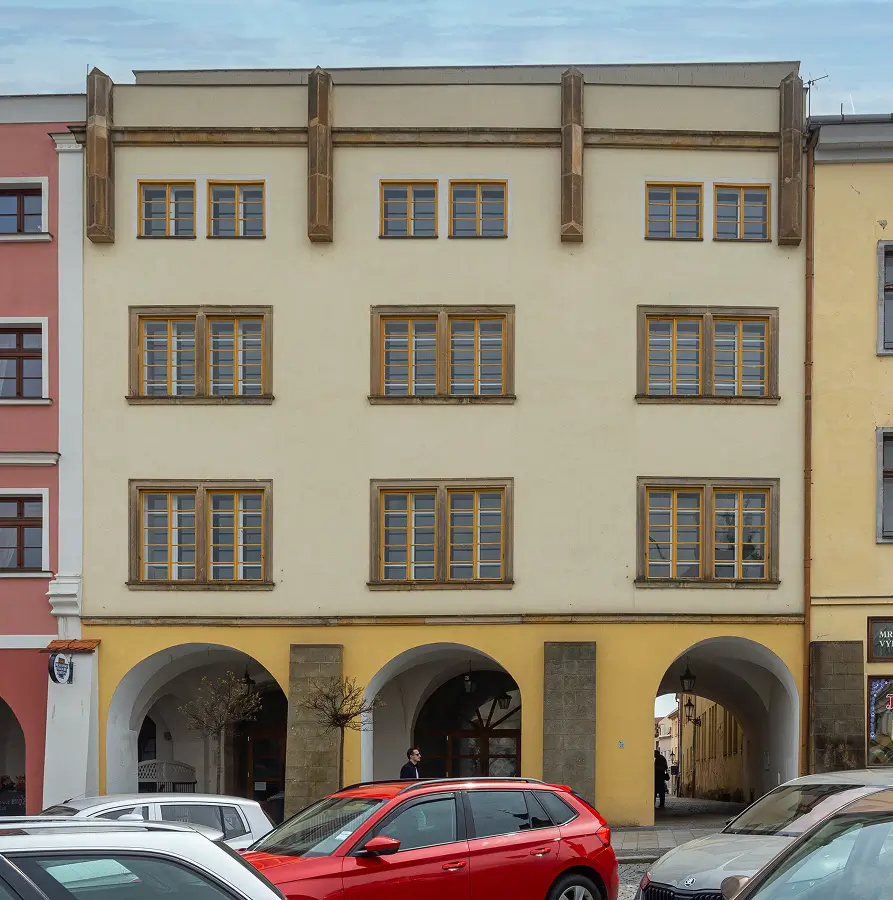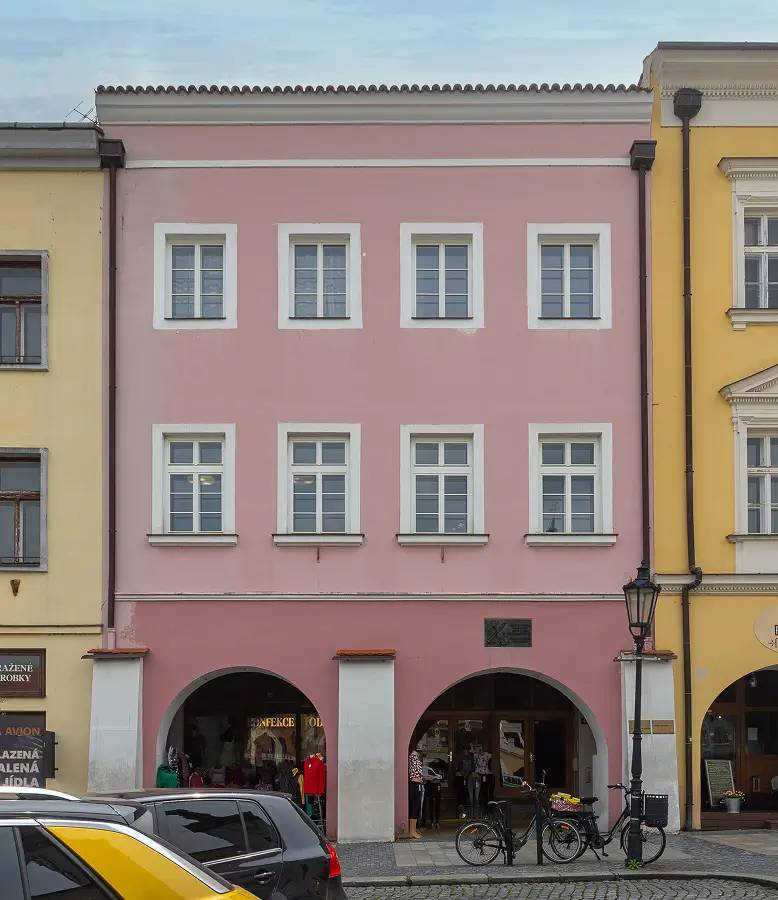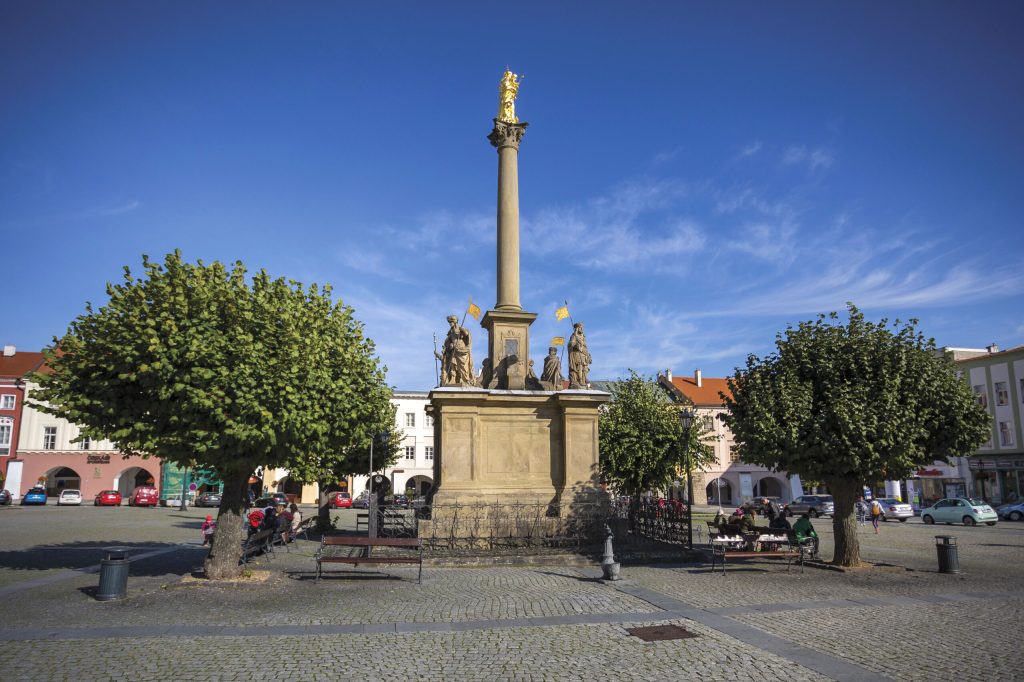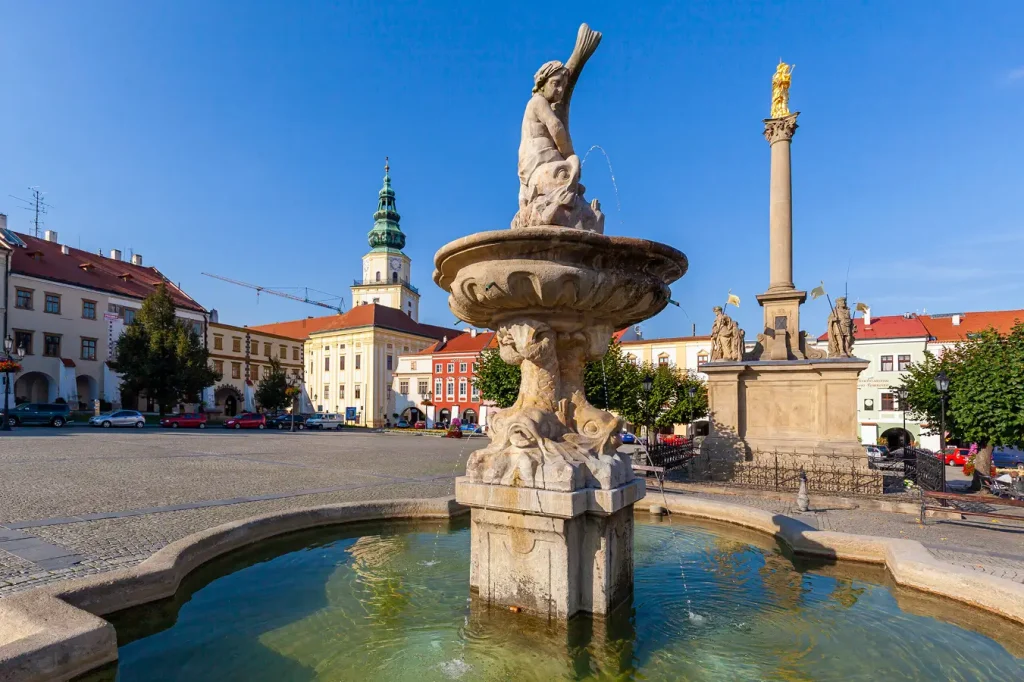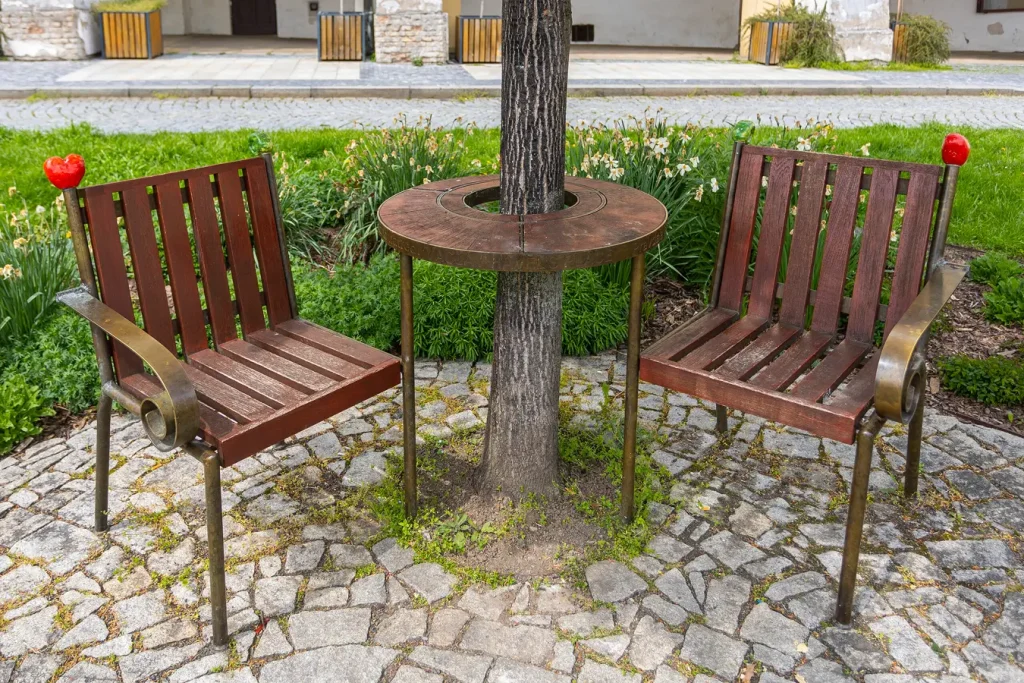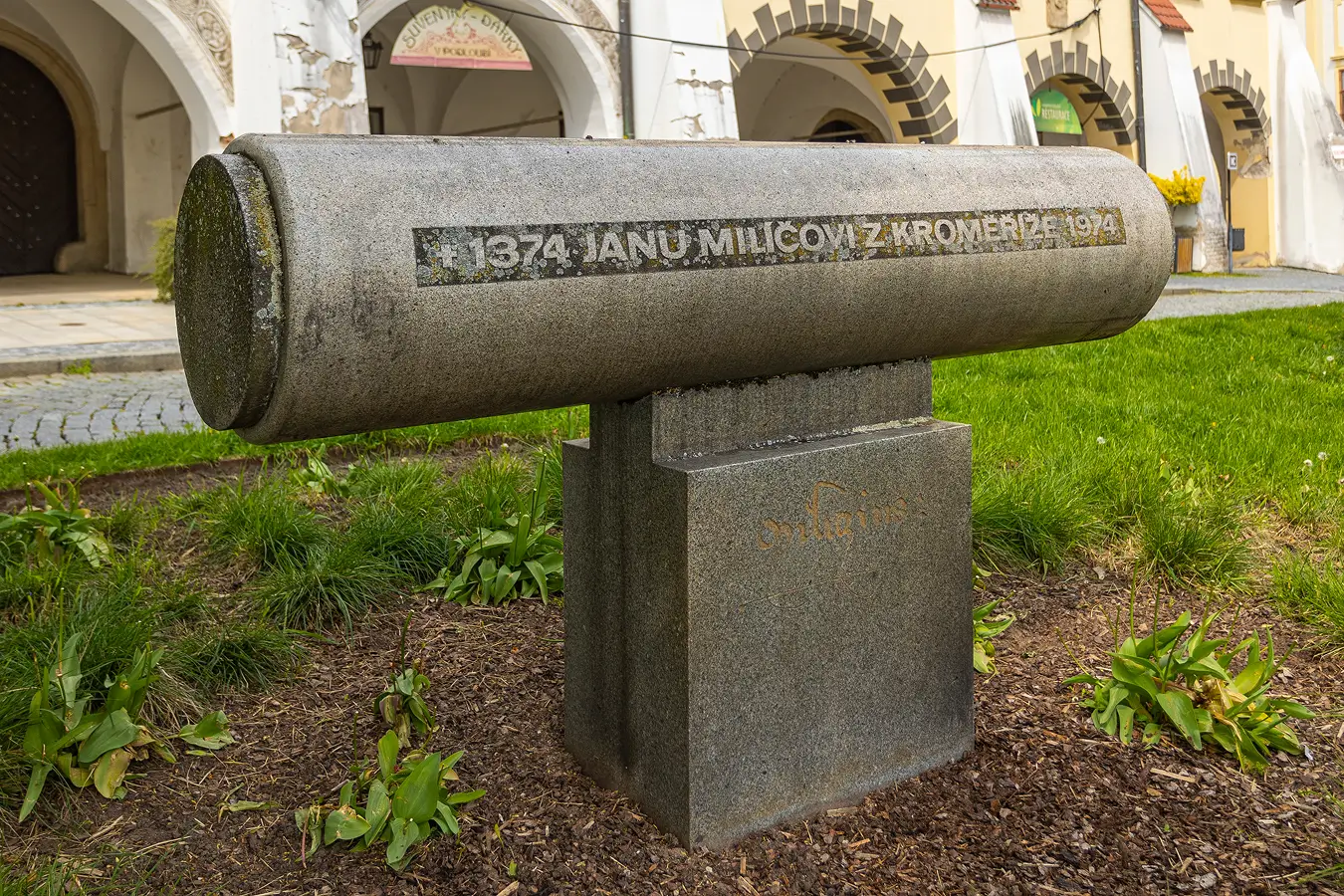Length of the route: 600 meters
Duration: 25 min
The Great Square is the geographical centre of Kroměříž, but it is mainly the centre of events and the centre of the Kroměříž Urban Conservation Area. The square was in the past known by various names, the oldest attested name from the second half of the 17th century is Markt (marketplace). Gradually it was also called Grosser Markt (Larger marketplace), Hrubý or Velký Rynk. During the 20th century it became the Main Square, Masaryk Square, Grosser Platz (Larger Square), Stalin Square and since 1962 the Great Square. Its origin is related to the foundation of Kroměříž in the second half of the 13th century, when the Great Square with a rectangular ground plan of about one hectare became the foundation and the center of the city. It served as a marketplace (the main market day was appointed to Friday). There were various festivities, parades and celebrations held here. Alongside the entire perimeter of the Great Square there were originally houses with arcades. Some disappeared during the 19th century, these spaces were used for shops and warehouses. There was a lot of business going on here. Directly on the square stood (around the middle of the 16th century) a pillory – the symbol of the city executive. In the 17th century two important Baroque buildings were built here – a fountain and a Marian column. Initially, the square was paved only in some places, subsequently the whole area was then paved with stone paving called “cat’s heads” (obtained from the quarry in Barbořina) in the first half of the 19th century. The square was then repaved several times. In 1948, granite plates and smaller granite cobblestones replaced the original stones. The amount of 235 wagons of these stones was needed for the works.

